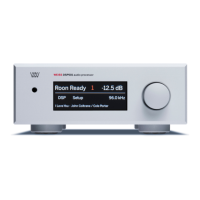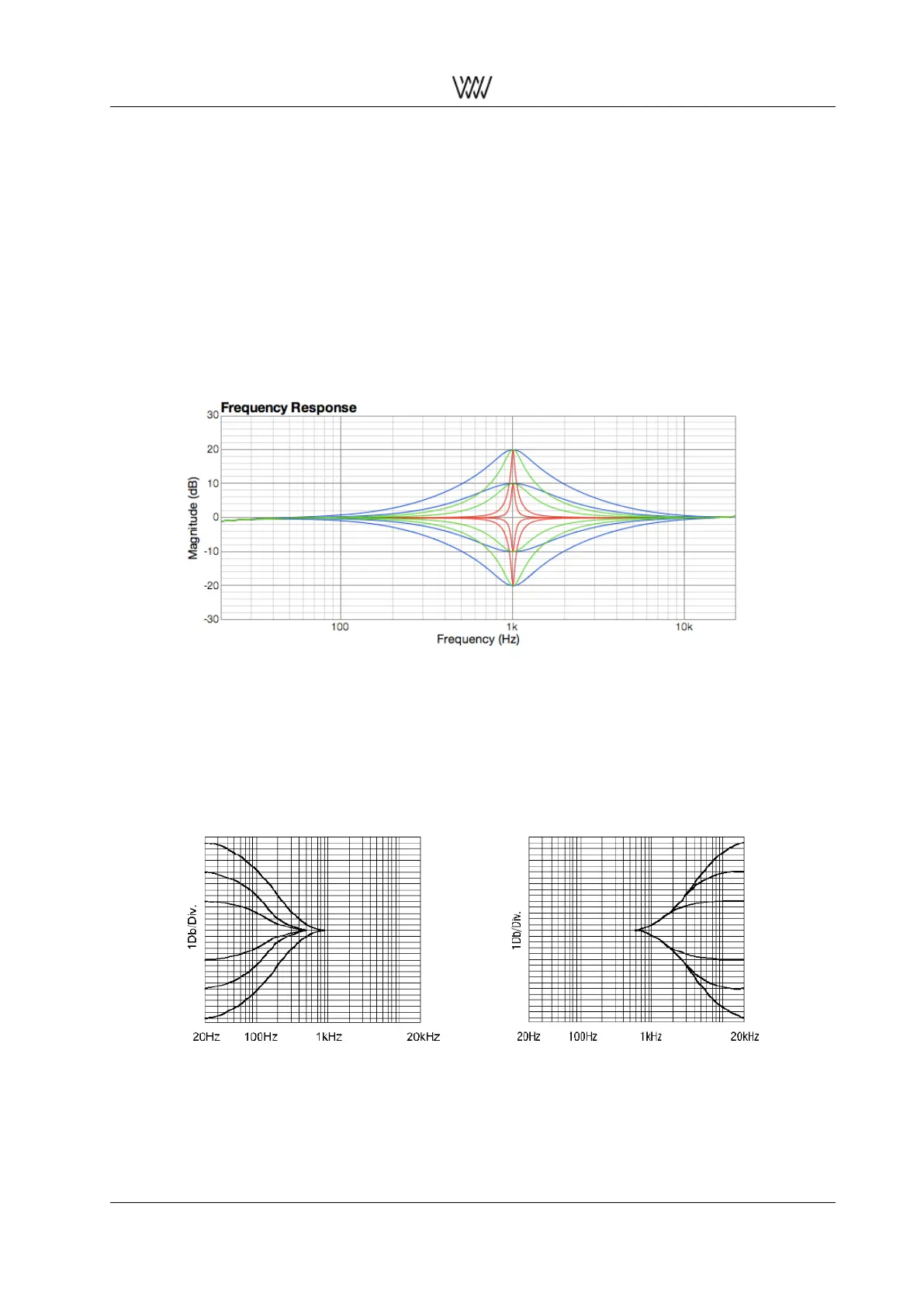Weiss Enginering Ltd. DSP501/DSP502
4 Signal Processing Algorithms
4.1 The Weiss parametric Equalizer (EQ)
The parametric equalizer is one of the most used tools in the professional audio production studio. It allows
to shape the tonal character of a recording or of single instrument tracks with great precision. This is due to
the fact that all the parameters of the EQ can be user set. I.e. the frequency where the EQ acts, the width
of the bell shaped EQ curve and the amount of boost or cut all can be set independently.
The EQ in the DSP50x has three independent bands. Each of them can be set to a mode, namely low
cut\high cut (to get rid of disturbing low or high frequencies), low shelf \high shelf (to boost or cut low or high
frequencies) or peaking (to boost any frequency with a bell shaped curve with a variable width).
Here are a few examples of frequency responses achievable with the parametric EQ:
Figure 19: EQ peak and notch filters
The peaking filter with various settings for the Q parameter (width) and the boost/cut parameter is displayed
above. The frequency of the filter is set to 1kHz in this example.
In the graphic below you see a low shelf filter and a high shelf filter with various settings for the boost/cut
parameter.
Figure 20: Low shelf and high shelf filter
User Manual and 21 White Papers

